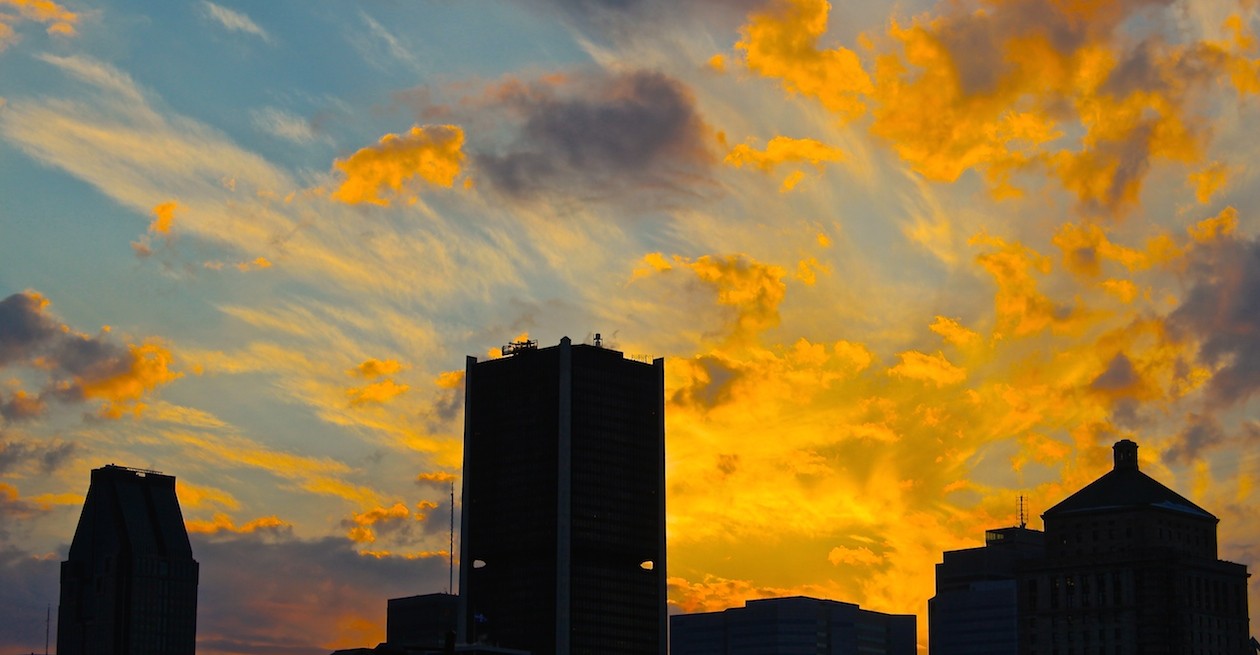
This is the former American Pavilion, designed by Buckminster Fuller for Expo 67. See this site Рperhaps the best Expo 67 website ever created, an excellent resource. Currently, it is the location of the Biosphere of Montr̩al, an Environment Canada museum dedicated to the ecology of the St-Lawrence River Valley.
Originally, the geodesic dome was covered by an acrylic skin, which burned off in an amazing fire (no one was hurt). Fuller had the idea that perhaps large tracts of city could be placed under massive geodesic domes so as to trap pollution within, filtering it out through special ventilation systems which would clean the polluted air before releasing it into the atmosphere. As you can well imagine, such domes would trap greenhouse gases within, so if they implemented this on a larger scale in Montréal, well, winter wouldn’t be such a pain in the ass now would it?

The question that needs to be asked is: should the Biosphere get its skin back? And/or – should we build a dome to cover a part of the city, perhaps a large residential area close to the downtown, and create an artificial environment within? Fuller had some far out ideas for how we should re-organize our lifestyles to anticipate future environmental concerns, and I’d have to recommend Operating Manual for Spaceship Earth as an excellent example of very avant-garde thinking. The effects of our poor long-term environmental planning are starting to manifest themselves, and any move to counter-act the carbon footprint of a major city would be a step in the right direction. And hell, if we built a large dome, people would notice, people would come and visit and ask us for help in building their own. I mean, who’s building gigantic geodesic domes these days? It’d be something…
Expo 67 was a very modernist exhibition of solutions to environmental and design problems discovered over the course of the twentieth century, and the American Pavilion was preserved because of the statement it made – solutions for future problems exist now, and people can orient themselves towards the future in order to anticipate and better react to what’s coming.
So, the second modest proposal Рbuild a geodesic dome over a part of Montr̩al, and create an artificial biosphere within. Demonstrate in no uncertain terms how such a construction can reduce the local carbon footprint, and give our citizens a tropical place we can escape to when its -30 C!









